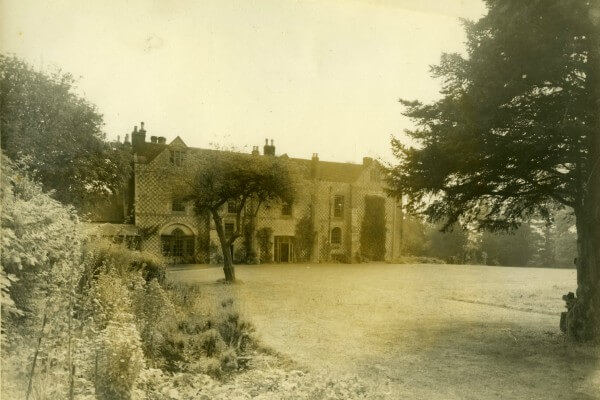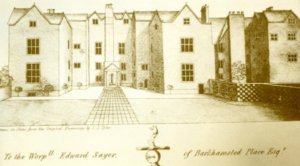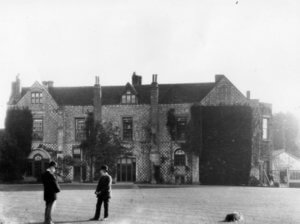Berkhamsted Place

The Elizabethan country manor at the top of Castle Hill survived for almost 400 years before it was demolished. Here’s a potted history.
Berkhamsted Place was a mansion house built at the top of Castle Hill, where it remained for almost 400 years, until 1967 when it was sadly demolished.
The history of Berkhamsted Place is fascinating, in part due to the number of notable characters who lived there.
It was originally built in 1580 by Sir Edward Carey, the keeper of the Royal Jewel House, after Queen Elizabeth I granted him the Manor of Berkhamsted and the lease of Berkhamsted Castle.
By this time, Berkhamsted Castle had already fallen into disrepair, so Carey used stone from the castle to build Berkhamsted Place, a country manor overlooking the castle.
However Sir Carey preferred to live in his house in Aldenham, so his brother Adolphus became the first tenant in 1588. Subsequently, a number of notable residents occupied the manor.
In 1612 it was purchased by Henry, Prince of Wales, for the sum of £4000. Henry, who died later that year, passed the house to his brother, Charles, who was later crowned King Charles I.
Prince Charles leased the property to his tutor Thomas Murray, and his family. In subsequent years the house was occupied by Berkhamsted-born soldier Daniel Axtell, a ruthless man who was later executed for regicide against King Charles I.
During the Restoration of the 1660s the house was leased to the Lord Treasurer, the Earl of Portland. But during his residency there was a terrible fire which destroyed two-thirds of the house. The next owner, John Sayer, Chief Cook to King Charles II, oversaw the building’s reconstruction.
 The central part of the house was rebuilt but the two wings which formed the side of the courtyard were never restored. Some of the original Elizabethan decorative stonework was retained, as well as some stone chequer work on the north wall, which can be seen in later photographs of the property.
The central part of the house was rebuilt but the two wings which formed the side of the courtyard were never restored. Some of the original Elizabethan decorative stonework was retained, as well as some stone chequer work on the north wall, which can be seen in later photographs of the property.
Sayer lived there with his family until his death in 1662. He was a well-known benefactor to the town of Berkhamsted, and his legacy enabled a row of almshouses to be built for the poor widows of the town; these still stand today on the High Street and bear a stone inscription ‘The gifte of John Sayer, 1664.’
The Sayer family sold the house to William Atwell in 1716, who sold it to John Roper just two years later. His family remained there for almost a century.
During the 19th century the house was occupied in turn by General Finch, who was responsible for rebuilding the Thomas Bourne School; by Lady Sarah Spencer and Gertrude, Countess of Pembroke, the Marquis and Marchioness of Hamilton and finally the Ram family, the last of whom, Sir Granville Ram, was the First Parliamentary Counsel to the Treasury in 1937.
 After the Second World War, the house became too expensive to maintain and was put up for sale. During the 1950s it was converted into flats. Sadly the mansion fell into decay in the 1960s and was eventually demolished in 1967. No doubt today it would have been saved.
After the Second World War, the house became too expensive to maintain and was put up for sale. During the 1950s it was converted into flats. Sadly the mansion fell into decay in the 1960s and was eventually demolished in 1967. No doubt today it would have been saved.
Today, the site is occupied by a number of private cottages and a farm.
With enormous thanks to Jenny Sherwood, Archivist for the Berkhamsted Local History and Museum Society, and Giles Clark for information on and photographs of Berkhamsted Place.
